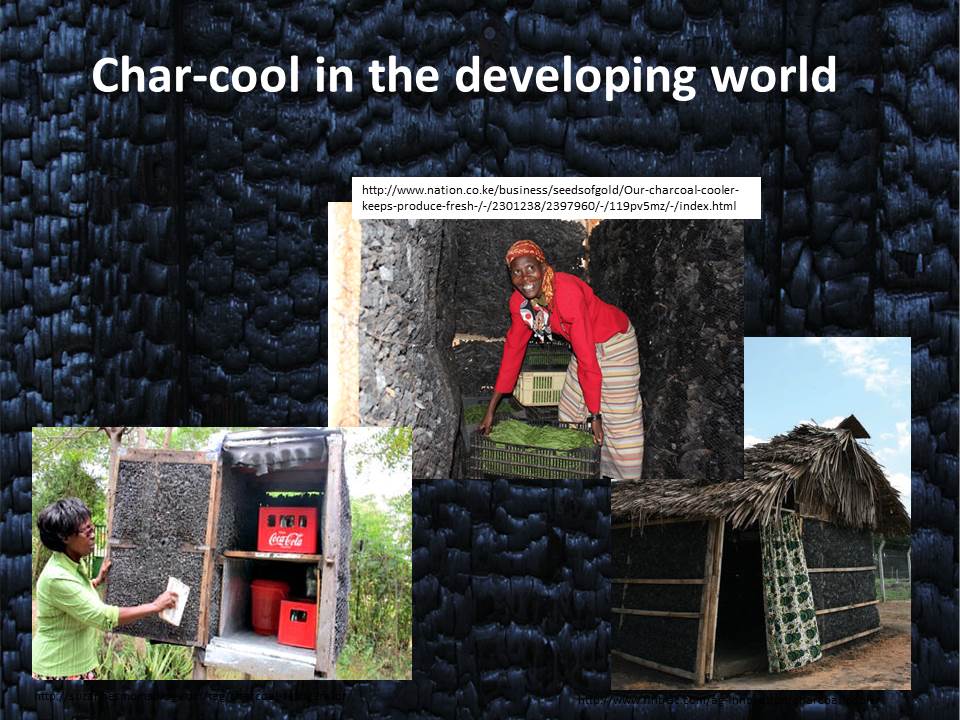With all these heat waves happening around the world I got to wondering if there is any possible way that biochar might be able to help people chill out (beyond the whole climate change mitigation through carbon sequestration aspect of course!). It seemed unlikely really. I mean char is black so it loves to absorb heat. When you are making it, you are definitely adding a LOT of heat to your surroundings.
But after I wrote a little something about using biochar in Zeer Pots for the Biochar Journal, I got to thinking about related possibilities. Cooling food with the help of biochar/charcoal has been demonstrated most notably in developing world countries. I especially like the charcoal refrigeration example in Kenya (middle picture above and article here). The author describes how charcoal works in this type of evaporative cooling technology:
“Charcoal is an ideal material for refrigeration because it has pores, which absorb and store water. This reduces heat from outside. And because wet charcoal does not allow easy passage of heat, it results in low temperatures inside the cubicle.”
There are many fine examples of this concept in other countries as well. So why have we not explored the use of this concept to cool humans and not just food? With the increasing number of heat waves, human suffering around the world is growing. Would not having a ‘char-conditioned’ house that could potentially be as much as 15F degrees cooler provide a bit of relief?
Evaporative cooling walls are not new in the developed world, but from what I can see the cooling pads used in these systems are generally made from cellulosic materials which I am guessing have a much more limited lifespan than something like charcoal would. Using biochar instead of cellulose could also provide additional benefits beyond longevity. It can filter water such that what comes out is better than what goes in, perhaps allowing for gray water to be used as the wetting material. If there is water trickling down at the base of the walls, this could potentially be used for agriculture or possibly human consumption (though I’d caution using it for drinking!).
This concept need not be limited to humans either. Imagine using charcoal walls in barns to keep them cooler and less smelly! The charcoal could even be made from animal waste and maybe, just maybe, the liquid used for cooling could be animal urine which could charge the biochar all the while filtering the urine. Or they could be used as aquaponics or greenhouse walls, made from charred vegetable waste and fish effluent could be the liquid used to moisten and charge the charcoal.
Endless cool possibilities…


